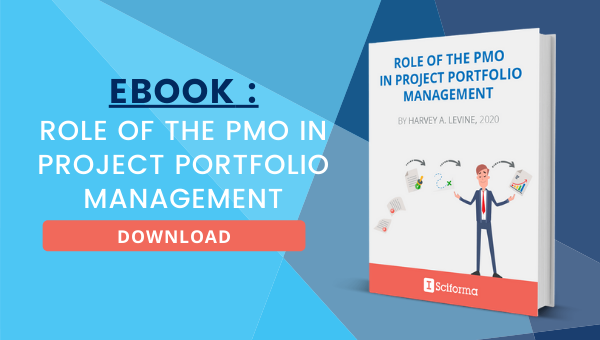You may be thinking that PPM is the kind of ultra-sophisticated, capital-intensive capability only large enterprises need and can afford. Think again. Much more than a fancier way to say that you’re simultaneously managing multiple projects, Project Portfolio Management is an actual process and discipline that can boost the performance of project activity significantly — even for comparatively smaller businesses. In this article, we’ll strive to draw up a profile of the businesses who implement and use Project Portfolio Management methods. We will also explain the reasons why these businesses choose to do so and the benefits they derive from it.
Defining PPM
The UK Association for Project Management defines a project portfolio as “a collection of projects and/or programmes used to structure and manage investments at an organisational or functional level to optimise strategic benefits or operational efficiency”. In other words, a portfolio can be viewed as an overarching structure that coordinates the deployment of related projects.
Still according to the UK APM (in the Body of Knowledge 7th edition), “Portfolio management is the selection, prioritisation and control of an organisation’s programmes and projects, in line with its strategic objectives and capacity to deliver. The goal is to balance the implementation of change initiatives and the maintenance of business-as-usual, while optimising return on investment.”
Breaking down the important ideas
- Selection and prioritization: A key role of PPM is to consider the various projects and programs that the organization has the opportunity to pursue relative to each other. PPM professionals assess project ideas and demands, analyzing their potential value and ROI as well as their risk level, in order to determine and prioritize the most promising ones.
- Alignment with strategic goals: Where Project Management focuses on proper implementation and delivery of projects and programs, Project Portfolio Management exists to make sure that the organization’s initiatives are in line with the strategic directions and that they’ll create maximum value against the firm’s objectives.
- Balance: Just like with any other investment portfolio, a rule of thumb is to diversify. A healthy and solid project portfolio should contain programs and projects of diverse natures, scopes, and risk profiles.
The need to select and prioritize the right projects and to preserve their ability to maximize organizational value is not exactly a niche requirement. However, the PPM discipline is most commonly found in certain categories of businesses.
Project Portfolio Management Helps Large or Growing Organizations Keep a Clean House
In organizations where fairly small project management teams only have to prioritize and coordinate a few projects, implementing a formal PPM process might not really be needed. However, it becomes a must when business growth causes the number of active and potential projects to soar. And especially when these multiple projects span different business units or departments, and when the initiatives are interrelated and interdependent (for example because they share the same resource pool).
Therefore, growth in business and project activity introduces the need for a formal process and a centralized governance to coordinate the various initiatives. Any organization eventually reaches the point where it needs a higher-level vision and a standardized process to see and analyze the respective strengths and weaknesses of proposed projects against the firm’s value drivers in order to determine which should take priority and have privileged access to critical resources and funding. This is true for high-growth businesses, but also for large diversified corporations, obviously.
Project Portfolio Management Helps Absorb Complexity
The Project Portfolio Management approach and process also comes useful when the organization is managing high-complexity projects. Some projects are too intricate to evaluate, plan, and manage on the back of an envelope. This is the case of projects involving a lot of moving parts and with many financial, regulatory, technical or organizational ramifications. For example, mega-projects bringing together a raft of stakeholders and partners, or technically complex initiatives where value and risk assessments require performing in-depth analysis and simulation (typically, blue-sky innovation projects).
As a matter of fact, running simulations is a cornerstone of Project Portfolio Management. Assisted by specific software tools, Portfolio Managers or PMOs will study and compare different allocation and prioritization scenarios to evaluate the potential impact of decisions in order to make the best calls. The ability to explore multiple possible futures is key to cope with the volatility and uncertainty that characterize the management of complex projects — and the current business conditions. This way, PPM assists in understanding the potential benefits and impact of challenging projects to help businesses stay focused on what matters to them.
Project Portfolio Management Supports Organizations Seeking a Maturity Growth Path
All project companies do not have the same level of PM maturity and culture. While some organizations boast several distinct PMOs (or similar project structures) and have squads of seasoned Project Managers, other businesses are inhibited by barriers to successful project management — for example, inadequate or outdated toolsets, shortage of project management skills, or lack of funding and resources due to the inability to demonstrate the value of project management to executive decision-makers.
Another key benefit of adopting Project Portfolio Management for a company is the resulting structuration of project work. PPM is a process that comes with the establishment of specific methodologies and of a central governance with clearly defined responsibilities across stakeholders to guide all project activity. Also, the implementation of PPM usually involves training and awareness programs designed to build core capabilities and competencies, opening a path for project management improvement and maturity growth over time.
Interested in Project Portfolio Management? Here is a selection of additional content to learn more:
- What is Portfolio Management in Project Management?
- How to implement Project Portfolio Management?
- How To Manage A Project Portfolio?








Camélia Docquin
Camélia is Sciforma’s Global Marketing Director and enjoys learning different perspectives of the current business environment and project management challenges that enterprises and individuals face daily. Main interests include : innovation, digital transformation, and strategy execution.